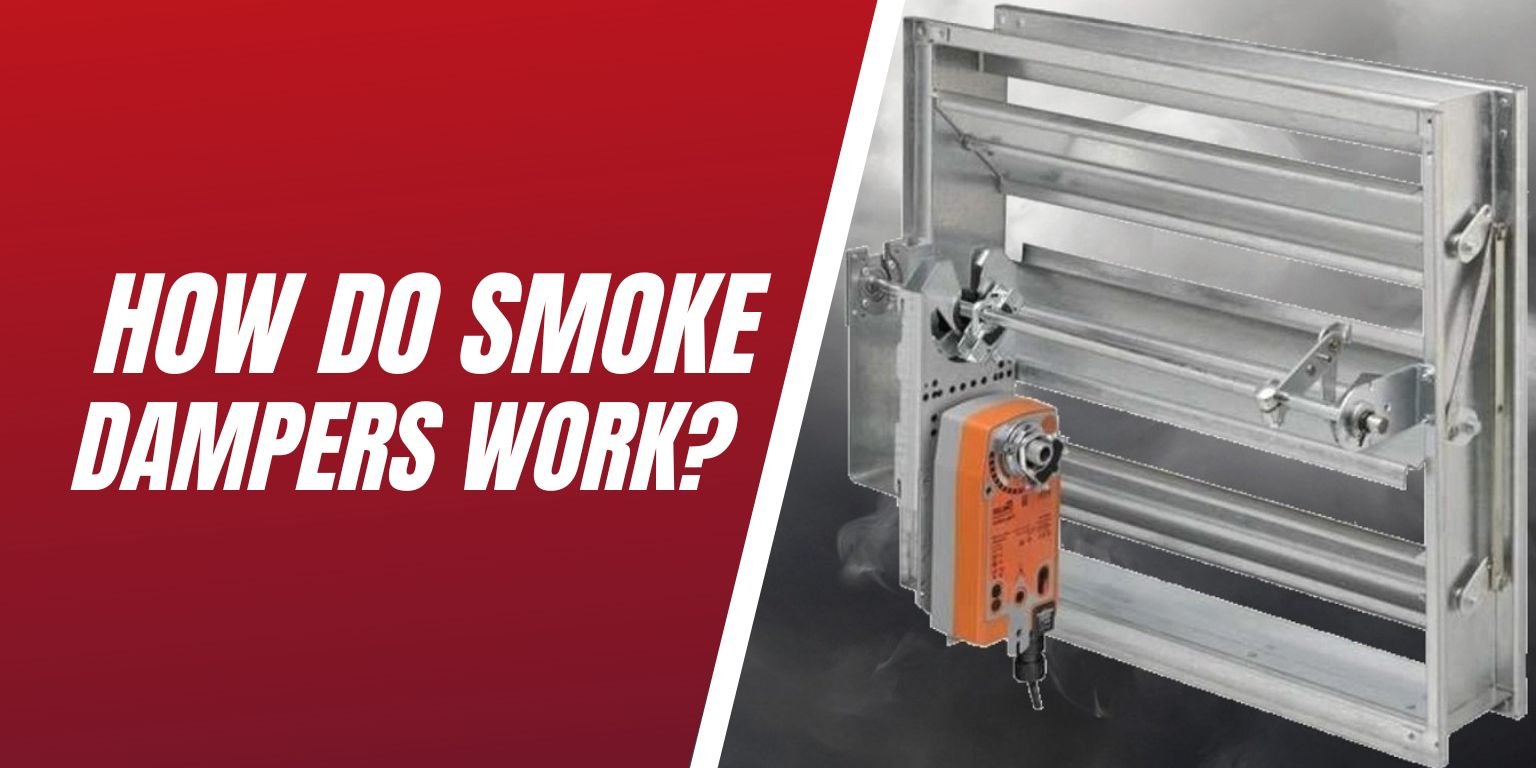
There are many aspects of a building’s fire barriers that are designed to help prevent the spread of fire as well as keeping occupants safe. Part of that system is the building’s fire and smoke dampers. Dampers are often hidden out of sight, which means they are more likely to be out of compliance. And as fire and life safety professionals, we spend a lot of time talking about the importance of fire damper inspection and repairs. But what about the smoke dampers that help prevent the spread of smoke?
How Do Smoke Dampers Work During A Fire?
Like fire, smoke can spread quickly and easily through a building. Smoke rises, so one of the fastest ways for it to spread is through a building’s ventilation system. And since smoke inhalation is the leading cause of death during a fire, preventing the spread of smoke is essential to keeping occupants safe during evacuation. So how exactly do smoke dampers work in helping to prevent smoke from spreading?
Smoke dampers are specifically designed and installed in the ductwork and air transfer openings to prevent the passage of smoke between sections. Smoke dampers will work once smoke is detected by a smoke detector, which is typically located in the ductwork as well. The smoke detectors are usually wired to a central alarm panel where an alarm will send a signal to an actuator attached to the smoke damper. The actuator can be located internally or externally of the damper, and is operated either electrically or pneumatically. The actuator will use the jack-shaft and linkage to open and close the blades of the smoke damper.
Pneumatic Actuators: Use air to function properly and will fail if there is:
- No Air to Actuator
- No Airline to Actuator
- Not Enough Air to Actuator
Electrical Actuators: Use power to function properly and will fail if there is:
- No Power to Actuator
- No Power Wired to Actuator
Understanding how a smoke dampers works can help you have a better understand of why inspecting and repairing smoke dampers are just as important as fire dampers. It only takes minutes for thick black smoke to fill a hallway or stairwell. By cutting off the passageways for smoke to travel, the fire will be contained to one specific location.
LSS Life Safety Services® Damper Inspection Services
LSS can provide fire and smoke damper inspections per code requirements. Above all, expert LSS technicians will assist you in keeping your facility in compliance with all local and state building codes. The National Fire Protection Association (NFPA) and the International Building and Fire Codes require regular maintenance of fire and smoke dampers. Authorities Having Jurisdiction (AHJ’s) such as the Joint Commission, fire marshals and insurance risk auditors enforce these requirements.
LSS’ fire damper inspection and smoke damper inspection services include:
- Inspection of fire dampers, smoke dampers and combination (fire/smoke) dampers 1 year after installation for all facilities. Every 4 years thereafter in non-healthcare facilities, every 6 years in hospitals.
- Locate and operate (i.e. actuate) all fire dampers and smoke dampers in your facility. Removing and resetting the fusible link to verify the damper fully closes.
- Mark the location of the dampers on drawings, AutoCAD plotting available.
- Manually activate electric smoke dampers and pneumatic smoke dampers. This is to ensure that the actuator is operable and to verify it fully closes.
- Provide a web-based master report via our exclusive reporting software, listing all code required information: location of damper, damper number, whether the damper passed or failed, and detailed reason for failure.
- A summary report providing statistical review of the fire and smoke damper inspection project. Provides a “snapshot” overview of the condition of your facility.
- “Before” and “After” pictures of every damper.
Contact Us Here or call 888-675-4519

